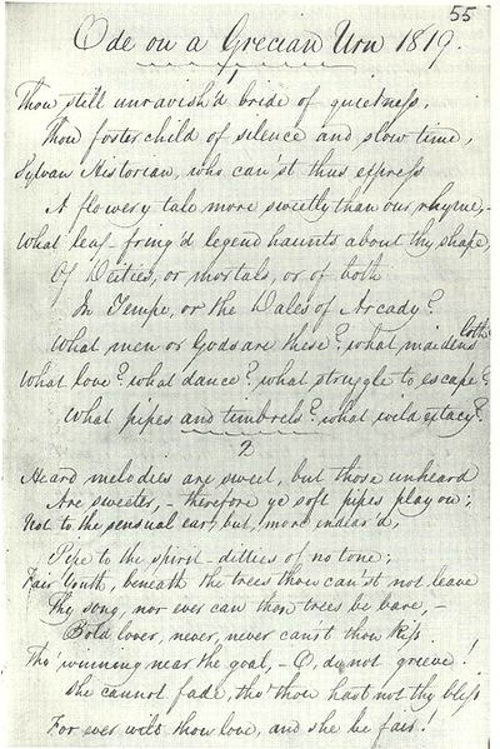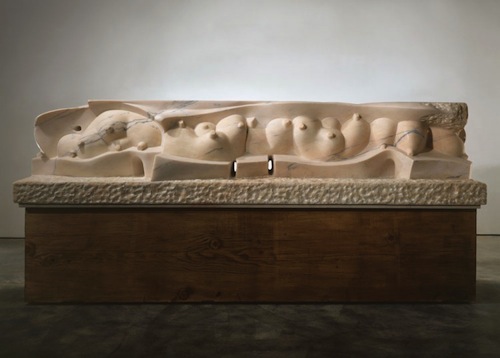I’m a member of the tribe who likes to write poetry about art. The first moment of ekphrastic poetry we have comes from Homer when he halts the battle action in The Illiad to describe the stunning Shield of Achilles. The most well-known ekphrastic poem is of course Keats’s “Ode on a Grecian Urn,” in which he uses the fabulously-named term, prosopopeia: he envoices the unravished, sylvan, silent urn to tease us into unceasing ideas about the relationship between beauty and truth.

Classical ekphrasis tends to celebrate and illuminate its subject; Postmodern examples undermine the importance of verisimilitude. And, Postmodern ekphrases characteristically bring up questions about authorship, stability, authenticity—that elusive auratic quality that Andrew Joron recently examined.
James A. W. Heffernan argues persuasively that poetic ekphrasis presents a struggle for dominance between the word and image in his excellent study, Museum of Words: The Poetics of Ekphrasis from Homer to Ashbery. This relationship is often gendered, he writes, as the traditional male poet feels challenged by the image (typically female or feminized) and so tries to dominate it with his gaze and word. Put simply, Keats longs to penetrate the mysteries of the “still unravish’d bride” of the urn.
Ashbery’s “Self-Portrait in a Convex Mirror,” Heffernan says, laments the impossibility of ever completely grasping Parmigianino’s painting and its inherent silence, which the poet describes as “the strict / Otherness of the painter in his / Other room.” A rapturous poem, and lonely.
It strikes me that some poets have returned to classical ekphrastic strategies and are expanding on the tradition. See the late Barbara Guest’s exquisite mediation on Juan Gris in “Roses” (or any of Guest’s poems, please!). Or Kevin Young’s “Cadillac Moon,” a poem from his ecstatic conversation with Jean-Michel Basquiat in To Repel Ghosts.
The relationship between poet and artist in these examples is not adversarial; it’s a response based on enthusiasm and engagement. A poetics that suggests permeability and difference: an interaction that doesn’t require a winner, that doesn’t necessarily attach itself to the anxiety of influence. It revels in the image, even if the artwork is ironic, a spectacle. It asks, it reveals, it wonders. I’ve written about the Unicorn Tapestries, and my latest book is about the art of Louise Bourgeois—both books are engaged with those subjects as a means of conversation and meditation. Ekphrasis as connectivity, a way of stepping into the aura.

Now that sounds like a yoga retreat. I’m not saying there isn’t any tension or competition between verbal and visual arts. Any act of description is of course an interpretation, and the relevance of verisimilitude has to be interrogated, yet again. Maybe it’s a question of tone, a more friendly one as in Williams’s Pictures from Brueghel and Other Poems, as I don’t see the same pattern of having to dominate and displace, or even of the despair of concluding “we cannot know each other.”
Want more on Keats? Bill Berkson discusses two books on the poet, and there’s a link to Tom Clark’s blog with more ekphrastic poems.
Now I’m feeling wistful for all the French Feminist theory I read at Vassar in the nineties.
For ever warm and still to be enjoy'd,
For ever panting, and for ever young;
All breathing human passion far above,
That leaves a heart high-sorrowful and cloy'd,
A burning forehead, and a parching tongue.
Born in Seattle and raised in Pittsburgh, poet Camille Guthrie earned a BA at Vassar College and an ...
Read Full Biography

